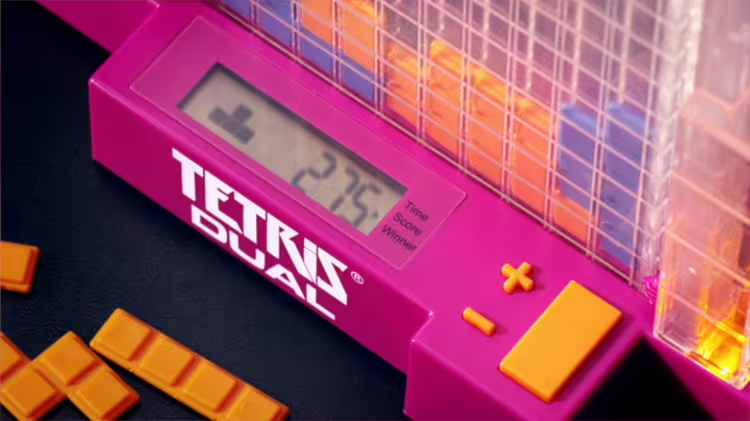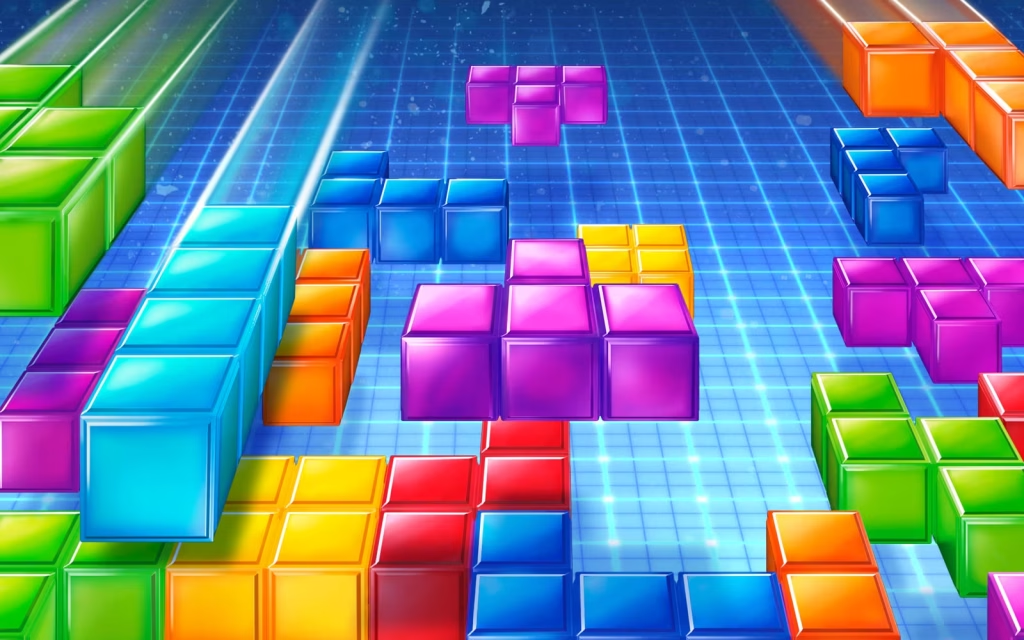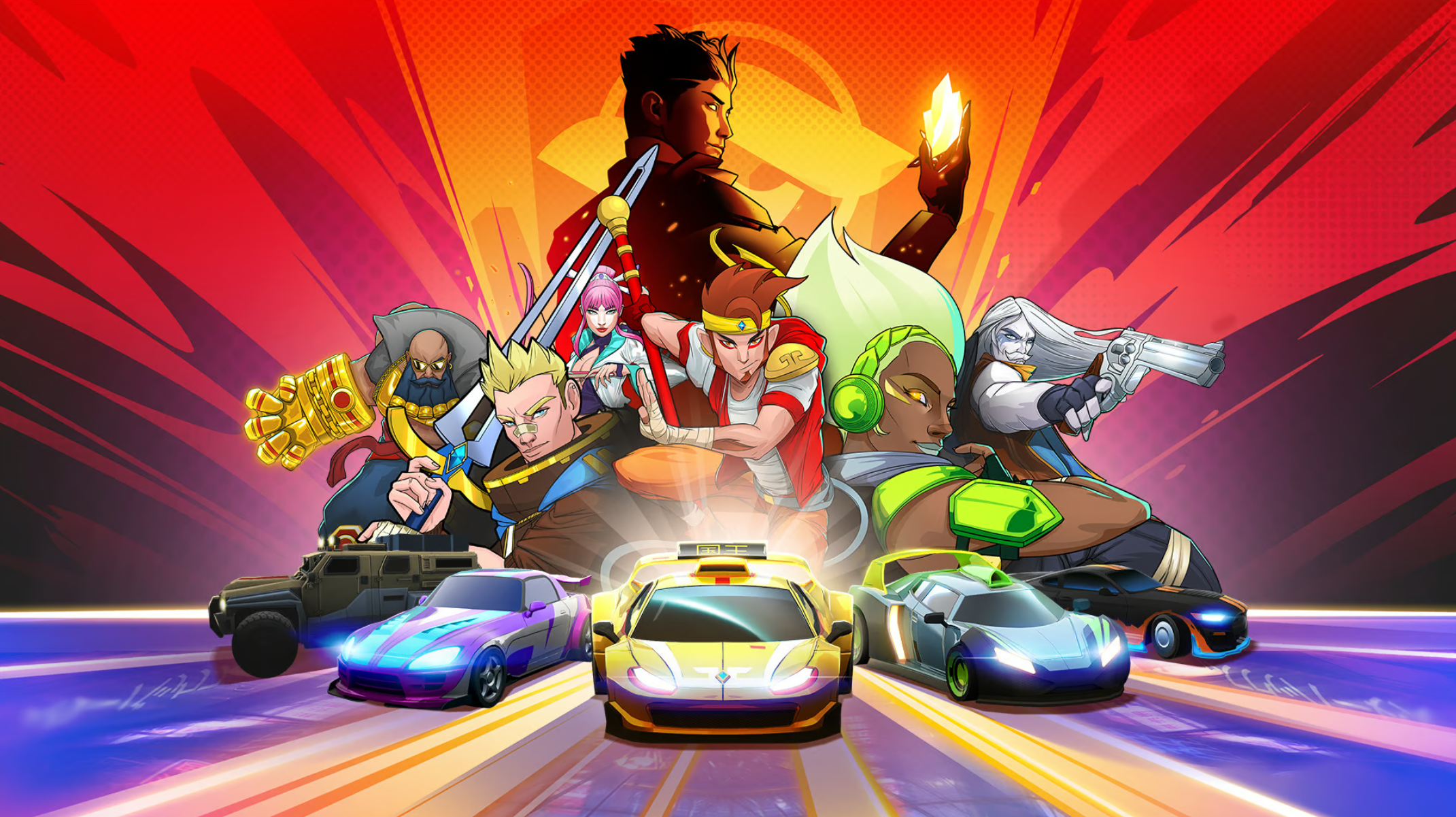This week marks the 40th anniversary of the original release of Tetris.
This simple yet elegant puzzle game has been with me for what feels like my entire life, and thus an auspicious occasion such as this is a wonderful opportunity to venerate a game that has seen me through some truly difficult times.
The first and most immediate question: what should I write? This is not a potted history nor is it a review. This article might be about Tetris, but it’s also about me. And after 40 trips around the sun together, the two feel somewhat entwined by now.

I am (slightly) older than Tetris, I don’t mind admitting. The game originally released on June 6th, 1984. This was a mere two years after my own launch. It was a different world back then, with a Cold War going on between two ideologically opposed factions. The OG Red versus Blue.
The game was designed by Alexey Pajitnov, a Russian software engineer who wanted to use computers to make people happy – an objective he more than accomplished, I think. I’m not going to give you a digest of the Wiki page, rather I will explore what has happened between now and then from my perspective on the sidelines.
That said, Tetris has one of the more interesting development stories. As explored in the recent movie starring Taron Egerton, it was an immediate success and versions of the game even appeared on platforms that Pajitnov didn’t even know about.
Possibly the most significant development in the game’s story was the decision by Nintendo to pack Tetris in with the Game Boy. There are several other pivotal moments in this story, but this is the one that put Tetris and I on a collision course – and that’s why it feels important to me.
Another pivotal moment: after years of exclusivity with Nintendo, and without the institutions of the now-disbanded USSR getting in the way of a deal, the rights to Tetris reverted to Pajitnov and his new studio: The Tetris Company. Between then and now (1996 and today’s date) the game has been with its creator-in-chief, and the expansion of the brand has gone on to see tetrominoes adorn clothes, skateboards, and food. There are even new variations for tabletop gamers – including Tetris Dual, a firm favourite in my house.

I first played Tetris on a friend’s Game Boy. I distinctly remember being beyond impressed when I first got my mitts on Nintendo’s handheld console. Its chunky grey body felt great to hold, and all I wanted to do was play, play, play. Of course, there was Tetris, but also the first few levels of Super Mario Bros. – in fact, I played both until I had overstayed my welcome and it was time to go home.
After that, I got my hands on one of those brightly coloured battery-powered LCD handhelds (thanks, Mum and Dad). This was ostensibly to play in the back of the car on long journeys, although I was playing at home, too. It quickly became obvious that more was required, and while we couldn’t afford a Game Boy, I got the next best thing: a Tetris-clone handheld with multiple game modes and a bigger screen.
I played that LCD handheld until it stopped working, but by then I was playing fewer digital games and more actual sports. Thus, it was a love affair that went away for the last few teenage years and the better part of my twenties. However, cue my thirties, bringing with them my video games journalism career and a reunion with Nintendo handhelds.
What was the first thing I bought when I got my 3DS? Well, it was actually The Legend of Zelda: Ocarina of Time 3D, but I also downloaded Tetris on the same day, and after wiggling the 3D slider and making the appropriate noises, I put down Link’s magnum opus and instead proceeded to drop blocks like it was 1992. I still haven’t finished a Zelda game to this day.

Tetris Splash was another version of the game that had me hooked, this time on my old Xbox 360. I also had it on my first iPad (and on subsequent devices, too) but I don’t like the touch controls – no, I don’t like them one bit.
Tetris wasn’t the most innovative game on the market at this point, and it wouldn’t be again until more recently when we were all invited to revel in the glitz and the glamour of Tetris Effect, as my favourite series wandered into the realm of virtual reality. Effect is Tetris viewed through the lens of Tetsuya Mizuguchi, the former Sega developer and creative influence behind countless arcade classics, including some of my favourites: Sega Rally, Rez, and, later, Lumines.
What goes around comes around, and it was once more time for Tetris to be relevant again, and the brilliance of Tetris Effect was quickly followed by the battle royale-inspired Tetris 99. I’m just waiting for Tetris Survivors, and you know what: I’ll be there for that on day one.
There’s something wonderful about getting into that flow state where your focused mind is able to operate at full speed without anything else slowing it down or getting in the way. In all of my time spent playing games, or indeed pursuing any activity that I can care to think of, I’m able to achieve a flow state more quickly and reliably when playing Tetris.

Block follows block follows block follows block. Twist and turn here, slide that over there, treading water until a line drops down from the heavens above this perpetual flow of tetriminos.
Block follows block follows block follows block. The progress is constant and unflinching. Solve the problem and do it now. There’s no time for meetings or committees. There’s no obfuscation of the final goal and who it serves. It’s just you and the pieces of your puzzle.
Block follows block follows block follows block. The flow is always the same. It’s reliably consistent and, in a world in constant flux, there is some comfort to that.

But why is this video game so important to me? Why do these falling blocks bring me so much comfort?
I know that Tetris has, in the past, been used to help trauma patients recover their confidence, so it makes sense that I have always been drawn back to the game as I have my own demons to work through. This last decade has been tough for many of us, and I’ve been hit by more than my fair share of challenges. At those moments when the going has got tough, the tough has dropped blocks.
I’m neurodivergent, and I think a big part of my connection to the game is that Tetris is a good fit for my neurotype. My brain is constantly busy. The ambient noise, the chatter that accompanies me always, is often random – perhaps procedurally generated would be more apt – and as such, it is easy for one strand of my inner monologue to distract another.
When I’m playing Tetris, I am unburdened of the constant cacophony – not because the soundtrack pulls me in (although that does happen when I’m playing Tetris Effect) but because the focus required of my conscious mind is such that I’m able to channel everything into my game. For good measure, I’ll nearly always have music playing in the background too, as is the case as I commit these discordant thoughts to the desktop monitor in front of me.

I think it would be a bridge too far to say something as grand as “a game saved my life”. My family and my friends did that. Prescription drugs and therapy did that. But at a time when I couldn’t do anything that I had previously loved – no films, no books, no board games with friends, my seat at the football remaining unclaimed – my first step back from the brink was to pick up a controller and download Tetris Effect again.
For a while, during those moments when I’ve been at my lowest, Tetris has been an unwitting ally and also a part of my recovery. There was a time, not too long ago, when it was all I was able to play. For months, I would skip more recent games – roguelikes, blockbusters, and stealthy favourites alike – and in their stead, there was only Tetris.
When looking back at a lifetime spent playing on my computer, from looking down on my Civilization to eventually trying to escape the flaming pits of Hades, there is one game that somehow fills the gaps between all the fleeting loves and passing phases.
I’m not even that good at it.




